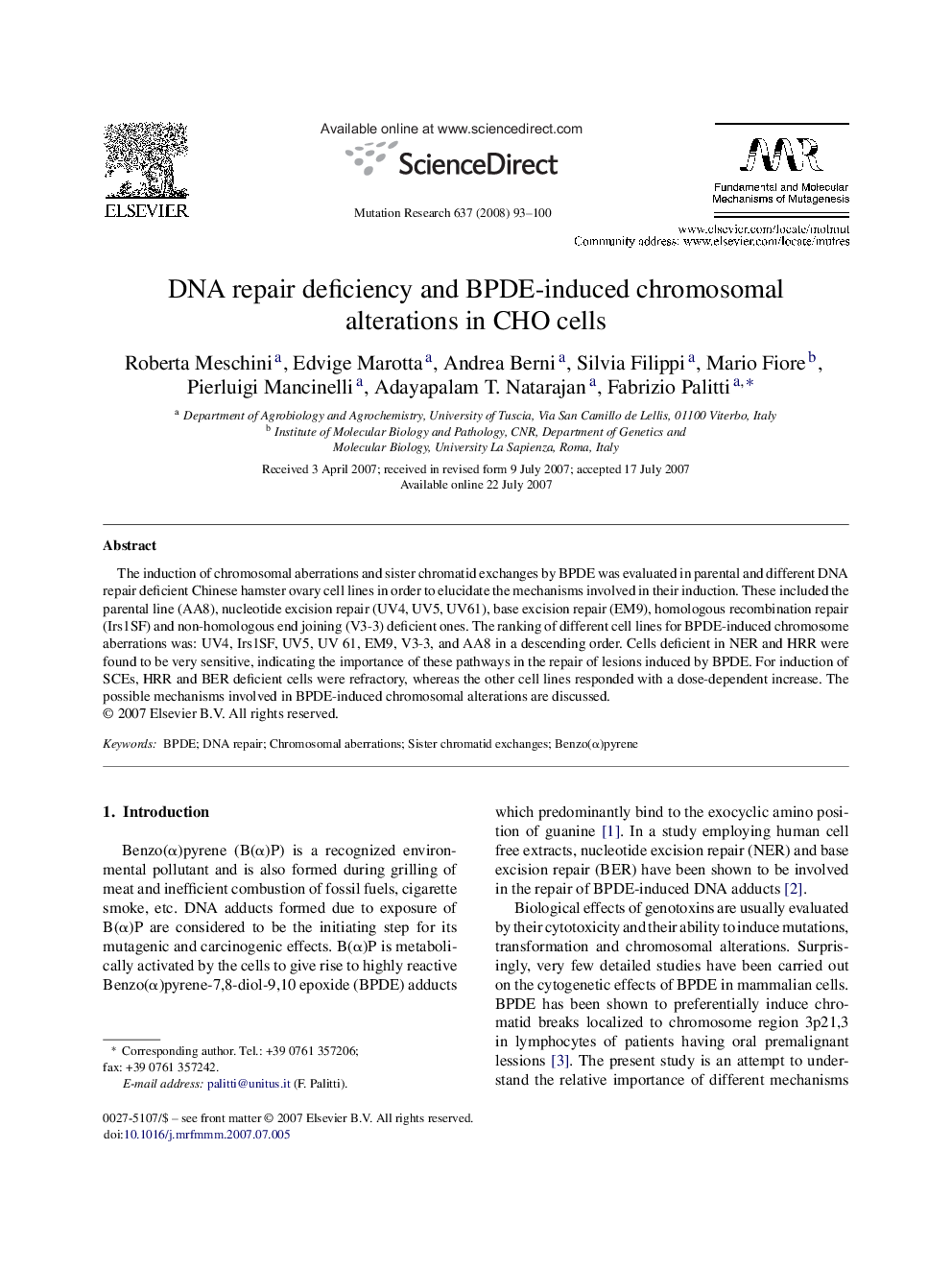| Article ID | Journal | Published Year | Pages | File Type |
|---|---|---|---|---|
| 2147244 | Mutation Research/Fundamental and Molecular Mechanisms of Mutagenesis | 2008 | 8 Pages |
Abstract
The induction of chromosomal aberrations and sister chromatid exchanges by BPDE was evaluated in parental and different DNA repair deficient Chinese hamster ovary cell lines in order to elucidate the mechanisms involved in their induction. These included the parental line (AA8), nucleotide excision repair (UV4, UV5, UV61), base excision repair (EM9), homologous recombination repair (Irs1SF) and non-homologous end joining (V3-3) deficient ones. The ranking of different cell lines for BPDE-induced chromosome aberrations was: UV4, Irs1SF, UV5, UV 61, EM9, V3-3, and AA8 in a descending order. Cells deficient in NER and HRR were found to be very sensitive, indicating the importance of these pathways in the repair of lesions induced by BPDE. For induction of SCEs, HRR and BER deficient cells were refractory, whereas the other cell lines responded with a dose-dependent increase. The possible mechanisms involved in BPDE-induced chromosomal alterations are discussed.
Related Topics
Life Sciences
Biochemistry, Genetics and Molecular Biology
Cancer Research
Authors
Roberta Meschini, Edvige Marotta, Andrea Berni, Silvia Filippi, Mario Fiore, Pierluigi Mancinelli, Adayapalam T. Natarajan, Fabrizio Palitti,
